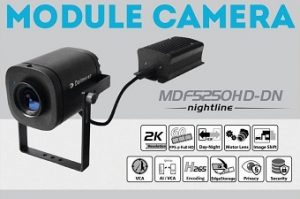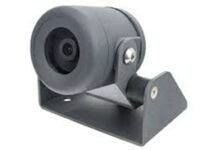
Dallmeier Electronic, one of the world’s renowned manufacturers of video information systems, presents its new module camera “MDF5250HD-DN”. The latest model in the Dallmeier 5000 camera series has excellent low-light characteristics. This guarantees high detail resolution and colour accuracy even in poor light conditions. The capability to perform AI-based object classification is provided even at the encoder level. At the same time, the camera enables reduced data rates due to H.265 video compression.
Compared with conventional models, the MDF5250HD-DN offers considerable advantages in terms of discretion, space requirement and flexibility as the encoder housing and the sensor are separate from each other. The ultracompact sensor housing means that users can install the latest module camera from Dallmeier even in the tightest of spaces. Possible fields of application thus include cash dispensers, retail or petrol stations, for example.
The camera has both a day and a night mode. If HDR mode is activated, the sensor functions within a dynamic range up to 120 dB. In combination with the high light sensitivity of 0.002 lux and the innovative image processing, this enables clear recordings with unmatched contrast and the highest detail resolutions and colour accuracy even in difficult light conditions. Low data rate together with high resolution? H.265 video compression makes it possible.
The MDF5250HD-DN delivers frame rates of up to 100 fps with a resolution of 1080p (Full HD). This typically demands correspondingly high bandwidths and large storage space capacities. Thanks to H.265 video compression, the data rate is reduced by as much as 50% compared to H.264 – with no loss of resolution or image quality. Its use in combination with Dallmeier recording systems also enables users to reduce network and storage loads further.
Besides the low data rate, the innovative encoder technology also enables significantly more powerful object classification. After just a short learning phase, the neural networks integrated at the camera level already allow more effective use of video analysis functions. This makes the evaluation of results from analysis functions such as “Tamper Detection”, “Line Crossing” or “Intrusion Detection” still more efficient.











